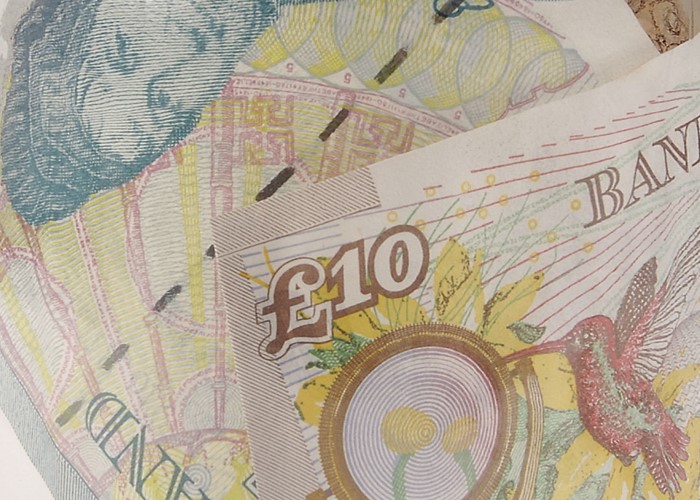The top 21 worst Cash ISAs

Over 19 million Brits have a tax-free savings account known as a cash ISA. The bad news is that these 21 ISAs pay the worst interest rates in the UK...
Last week, in Britain's worst savings accounts, my exclusive research for lovemoney.com exposed the 60 lowest-paying savings accounts in the UK. Each of these appalling accounts pays a before-tax interest rate of under 0.1% a year on a balance of £1,000. Of course, my advice to savers is to ditch and switch these accounts at once.
The UK's most popular tax shelter
This week, my research covers the UK's most popular tax-free savings account: the cash ISA. If you're a UK resident aged 16 or over, then you can open a cash ISA and deposit up to £3,600 per tax year into it. The interest paid on ISA deposits is tax-free, so you don't lose 20% (or even 40%, if you're a higher-rate taxpayer) of it to the taxman.
The good news is that -- from 6 October for the over-50s and from 6 April 2010 for other savers -- the yearly limit for a cash ISA is being raised to £5,100. In other words, the ceiling is set to increase by £1,500 a year, which is great news for serious savers.
The savings-rate slump
Cash ISAs are headline products for banks and building societies. Thus, in general, they used to pay pretty decent rates of interest. Alas, with the Bank of England's base rate at a 315-year low of 0.5% a year, savings rates have been savaged. Thus, savers accustomed to earning at least 5% a year on their spare cash have had to lower their expectations.
Nevertheless, by doing your homework and shopping around, you can find Best Buy cash ISAs paying a tax-free interest rate of between 2.5% and 3% a year. Even better, by tying up your money for, say, two to five years, then the best rates for long-term, fixed-rate cash ISAs are around 4% to 4.6%.
The ISA Hall of Shame
It's all very well talking about Best Buys, but remarkably few savers are willing to do the work to find their ideal account. Indeed, millions of us simply hand over our money to our bank or local building society, trusting that they will give us a fair deal.
The big problem with loyalty is that it is rarely rewarded in the financial world. For example, faithful savers who have stashed their cash in the following 21 cash ISAs are being taken for a rough ride:
|
Provider |
Account Name |
Rate (%) |
Interest on £1,000 (£) |
|
Cheltenham & Gloucester |
C&G Cash ISA |
0.04 |
40p |
|
Abbey |
Easy ISA |
0.10 |
1 |
|
Alliance & Leicester |
Branch Cash ISA |
0.10 |
1 |
|
Bank of Scotland |
Halifax ISA Saver |
0.10 |
1 |
|
Bradford & Bingley |
Easy ISA |
0.10 |
1 |
|
Dunfermline BS |
Cash ISA Issue 3 |
0.10 |
1 |
|
Halifax |
ISA Saver |
0.10 |
1 |
|
Saffron BS |
Easy Access ISA |
0.10 |
1 |
|
West Bromwich BS |
Easy Access ISA |
0.10 |
1 |
|
Barclays Bank |
Cash ISA |
0.10 |
1 |
|
Dunfermline BS |
Direct Cash ISA Issue 3 |
0.10 |
1 |
|
Virgin Money |
Virgin Cash ISA |
0.10 |
1 |
|
Hoare & Co |
Cash ISA |
0.20 |
2 |
|
HSBC |
Cash ISA |
0.20 |
2 |
|
Chesham BS |
Cash ISA 60 |
0.25 |
2.50 |
|
Derbyshire BS |
Cash ISA |
0.25 |
2.50 |
|
First Trust Bank (NI) |
Cash ISA |
0.25 |
2.50 |
|
HSBC |
Preferential Cash ISA |
0.25 |
2.50 |
|
Nationwide BS |
Instant Access ISA |
0.25 |
2.50 |
|
West Bromwich BS |
Privileged Membership ISA |
0.25 |
2.50 |
|
Direct Line |
Cash ISA |
0.25 |
2.50 |
* Source: Moneyfacts. Rates are based on a balance of £1,000.
As you can see, our wooden spoon goes to the C&G Cash ISA, which pays yearly interest of a miserable 40p (albeit tax-free) on a balance of £1,000. Rubbish!
The remaining 20 accounts are also terrible, paying just £1 to £2.50 a year on a thousand pounds.
Note that all of the above accounts provided instant or no-notice access to your cash, except the Cash ISA 60 account from Chesham BS, which requires 60 days' notice.
The huge problem with these accounts is that the interest paid is so paltry that any money in them is going to waste. After taking inflation (rising prices) into account, cash in these accounts is falling in value with every passing year. In short, these savings accounts shrink your cash instead of growing it.
Time to take a hike
The simple solution to these awful ISAs is to transfer your money to a new provider paying a table-topping rate of interest. By doing so, you can increase your rate to between 3% and 4.5% a year. Switching from one of our 21 shockers should mean you earn twenty to a hundred times as much interest each year!
One final piece of advice: in order to remain tax free, cash ISA transfers must be arranged between your old and new provider. So, don't close your existing ISA and try to open a new one with this withdrawal, or you'll lose your previous ISA allowances.
More: Find your perfect savings account | Cash ISA changes for the over-50s | My top five instant-access savings accounts
Comments
Do you want to comment on this article? You need to be signed in for this feature